Apple has two new iPads, and they’ve never been more similar.
The iPad Air and iPad Mini with Retina Display are both out in stores, but unlike a year ago, the large and small iPad are, under the hood, more alike than different. Both have Retina displays, in the same resolution no less. Both have A7 processors. Both come in storage sizes up to 128GB. Both come in cellular versions. One starts at $399, the other starts at $499.
So, which iPad should you get?
Let’s assume you’re already reading this article because you want to buy a new iPad versus another tablet. The decision becomes this: iPad Air or Retina Mini? Based on what we’ve seen so far, the decision’s never been harder to make. But that’s not necessarily a bad thing.
(Editors’ note:Updated December 3, 2013, with additional observations and screen testing by David Katzmaier.)
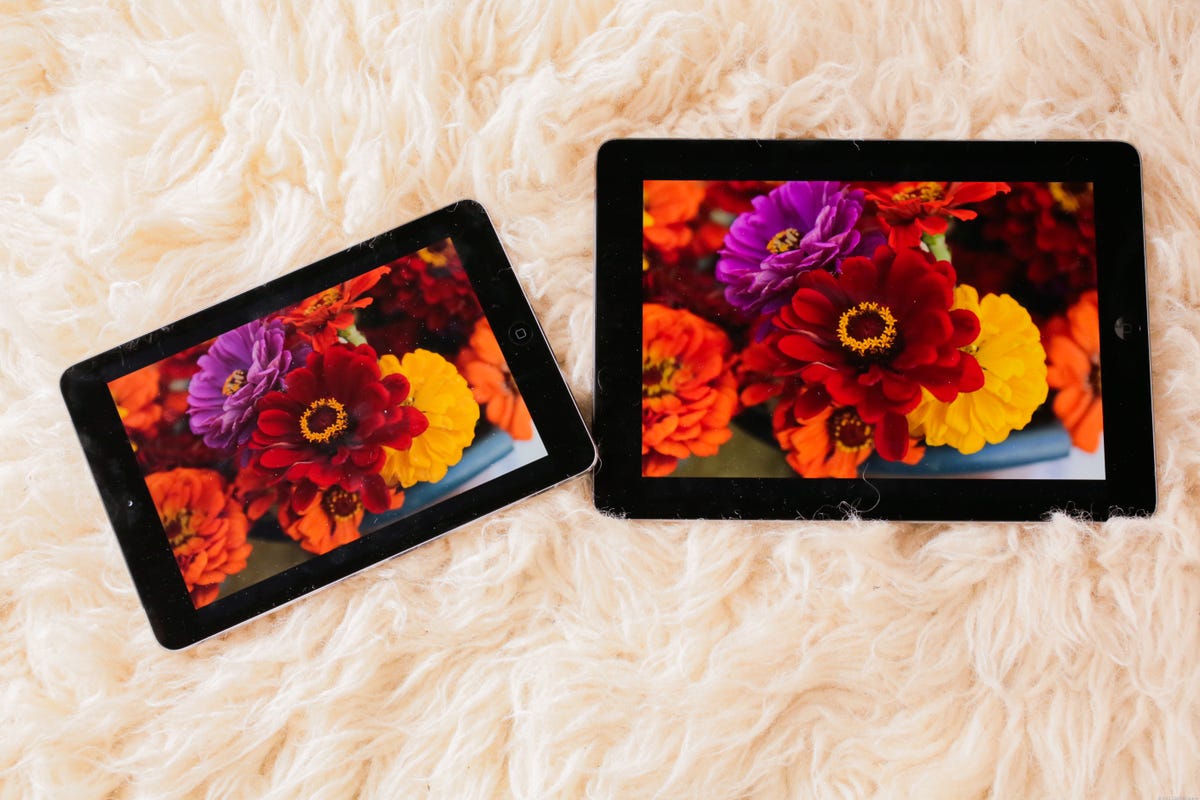

Sarah Tew/CNET
Screen quality: Air versus Retina Mini
The iPad Mini with Retina Display has a screen resolution that matches the iPad Air’s: 2,048×1,536. In 7.9 inches, it’s a denser pixel-per-inch resolution. Does that matter? On both iPads, you’d have to take out a jeweler’s loupe to see the actual pixels with your own eye. Text on both looks crisp and clean from nearly any distance, and both have similar screen brightness.
But, in terms of colors and overall picture quality, there is a difference. CNET editor David Katzmaier subjected both, along with the Nexus 7 and Kindle Fire HDX 7, to display tests similar to what he’s done for select phones. He found the Retina Mini’s grayscale was great and its contrast in the same ballpark as the others, but its color accuracy and saturation weren’t as impressive. Here are the full results of his tests if you’re curious.
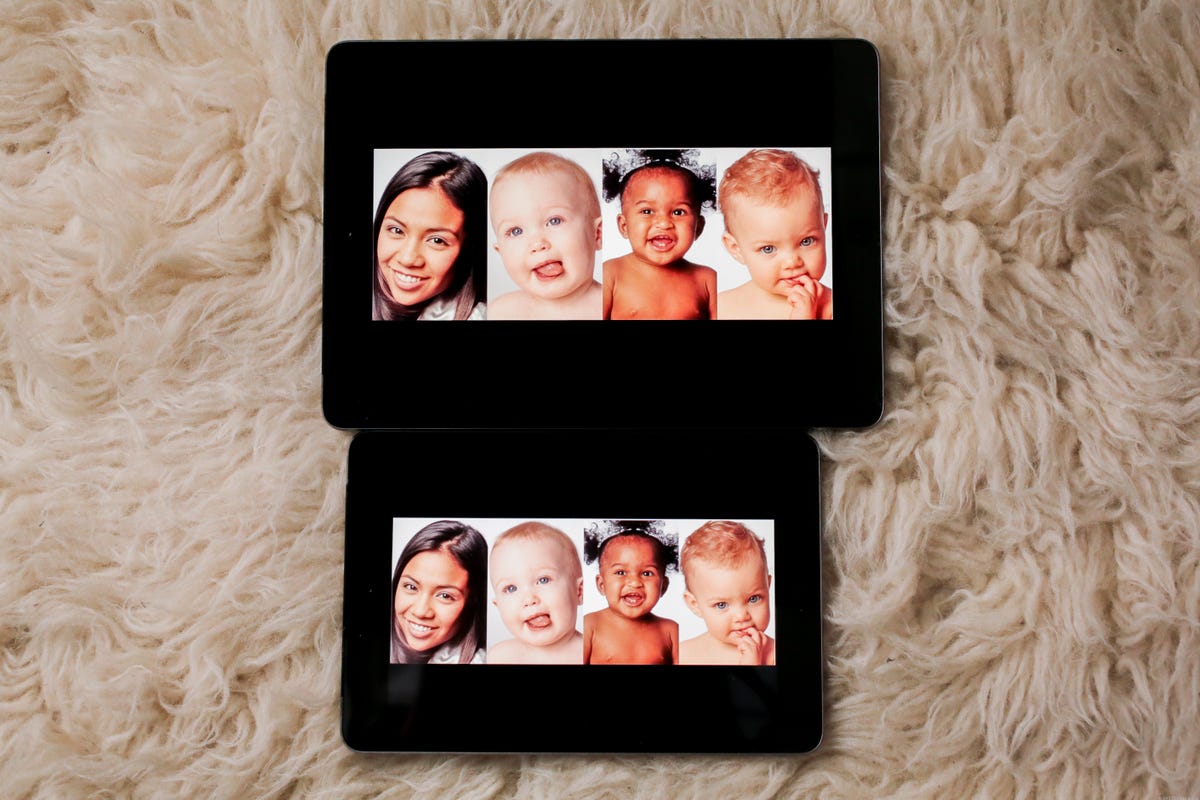

Sarah Tew/CNET
When David and I looked at a series of test photos, the color differences between the four tablets were apparent, and in highly saturated shots — particularly a close-up of some red, purple, and orange flowers — the Mini seemed more washed out and less punchy. In other shots, however, for example, the skin tones in children’s faces and a black-and-white skull, the Mini’s excellent grayscale helped it look as good as the others, and more accurate than the Fire HDX in particular. Overall, we found ourselves liking the Air best, followed by the Nexus 7 and then the Fire, with the Mini in last place. It wasn’t bad, just not as good as we’d expect.
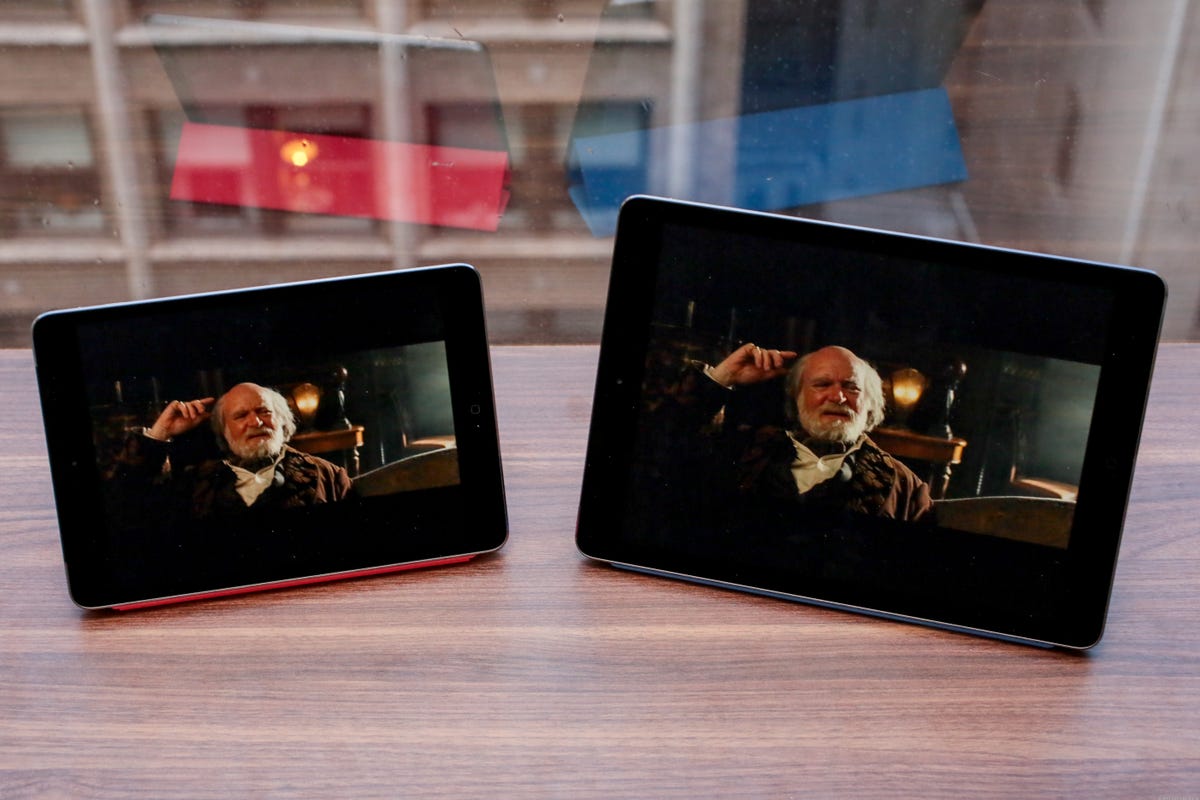

Sarah Tew/CNET
Does that matter? Well, if you want the best possible display for photos, games and movies, then yes. But the Retina Mini’s crisp, bright display still looks awfully good for just about everything, and unless you’re comparing photos or icons side-by-side, you probably won’t miss that lost saturation.
Performance: Very nearly the same, but the edge goes to the Air
Do you want the very fastest iPad out there? Get the iPad Air: it has a slightly speedier A7 processor that gave it an edge on our benchmark tests.
But I wouldn’t call that edge significant. Both the Retina Mini and iPad Air were miles better than last year’s iPad Mini, and a significant step up from last year’s fourth-gen iPad. Battery life on both iPads exceeded 10 hours, too.
A few apps did seem to run a little less smoothly on the Retina Mini compared with the Air, but I wouldn’t say you’re gaining an extra $100 worth of performance.


Sarah Tew/CNET
The key differences: Price and size
The iPad Air weighs a pound, and has a 9.7-inch screen. It starts at $499. The iPad Mini with Retina Display weighs 0.73 pound and has a 7.9-inch screen. It’s also $100 less, starting at $399.
You’re really saving money by getting a physically smaller display with higher pixel density.
Is your eyesight bad? Do you appreciate perfect color accuracy? Get the iPad Air. But I made the switch to using an iPad Mini last year over the fourth-gen iPad despite a drop in performance and screen quality. The gap is now nearly invisible, and so the Retina Mini remains my personal pick.
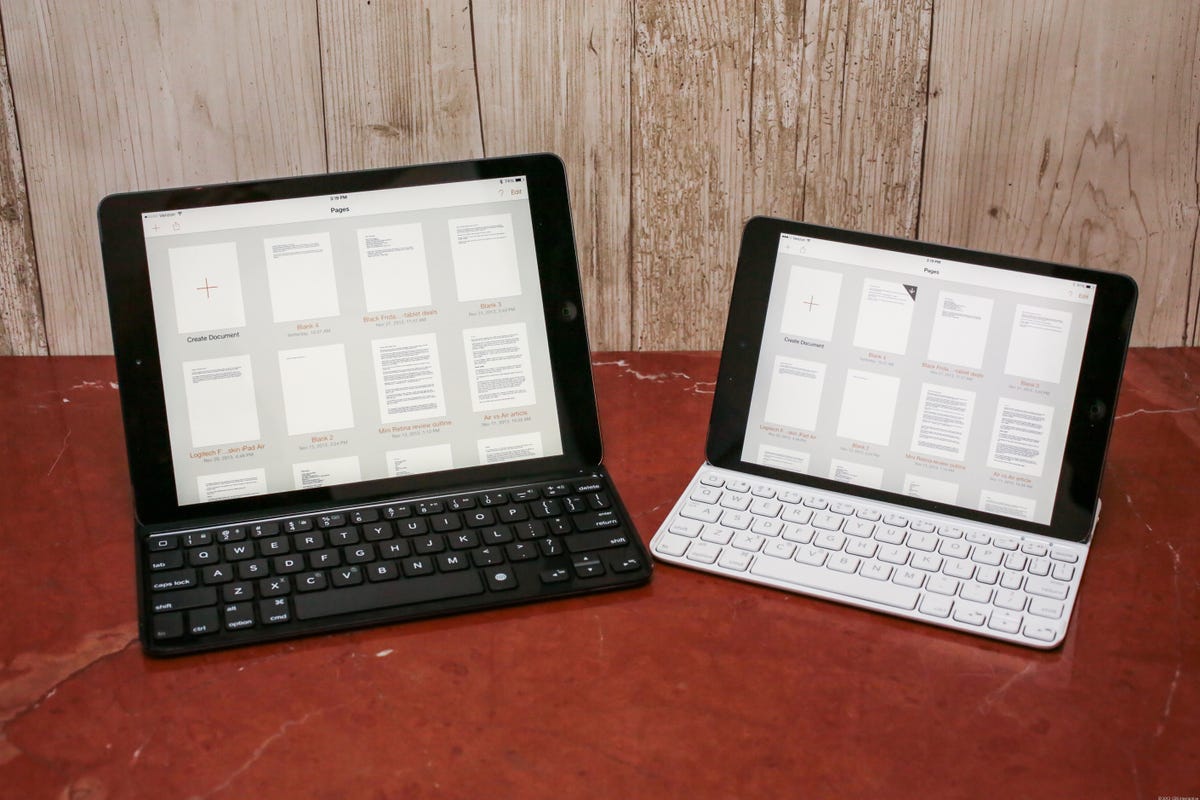

Sarah Tew/CNET
Productivity? Lean to Air…but the Mini can get things done, too
I’ve been able to get a lot of work done on the iPad Mini, both Retina and non-Retina models. It’s not as ideal for every task, but it works. If you’re a hardcore write-on-an-iPad person, the Air’s physically larger size and virtual keyboard might make more sense. But you can do everything else fine on a Mini. It’s just more compact. For me, that e-reader-plus-extra feel of the Mini make it a perfect companion.
Saving $100: Does that sound good to you? Go Mini
The Retina Mini offers a very similar product, for $100 less at the same storage configurations. Saving $100 on a Mini means you can get a 32GB Retina Mini for $499, or get the 16GB LTE version for $30 more than a Wi-Fi Air. Or, savings can go toward a keyboard case or other accessory. Or, you just save $100.
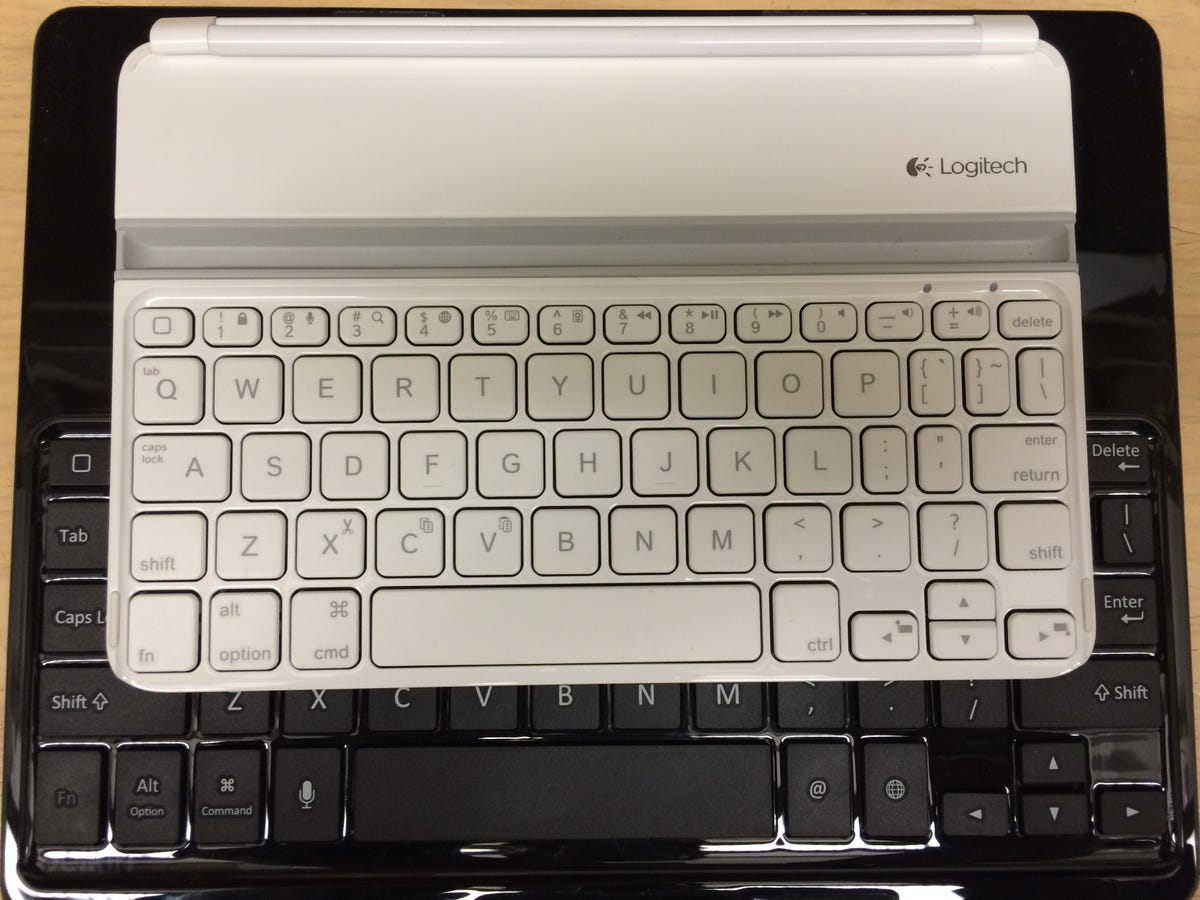

Scott Stein/CNET
Do you use a keyboard case? Go Air
The iPad Mini keyboard accessories I’ve used just don’t feel comfortable: they compress and remove keys to fit the dimensions of the Mini. You could always prop the Mini up and use a full-size Bluetooth keyboard, but it’ll feel a little more clunky.
The iPad Air enjoys much better keyboard accessories, much like previous “large” iPads: the Belkin Ultimate Keyboard Case, Logitech Fabricskin Keyboard Folio and Ultrathin Keyboard Cover are all very good, and I’ve been alternating between them — stay tuned for full reviews. Already, I can tell that the iPad Air is better for those who are using an iPad as a true writing tool.
If you’re a big keyboard typer, get the Air.
Is bigger better?
My advice is get thee to an Apple Store and just look at the size of the Mini and 9.7-inch iPad screens. See if that 7.9-inch screen works for you. You don’t need to see the Retina version to understand if the display feels too small for your everyday needs.
I like smaller travel tech: I gravitate toward the Mini, especially since it seems to have no compromises. Some people prefer the 11-inch MacBook Air to the 13-inch. I think it’s a similar analogy here: it depends on how small you want your bag to be.
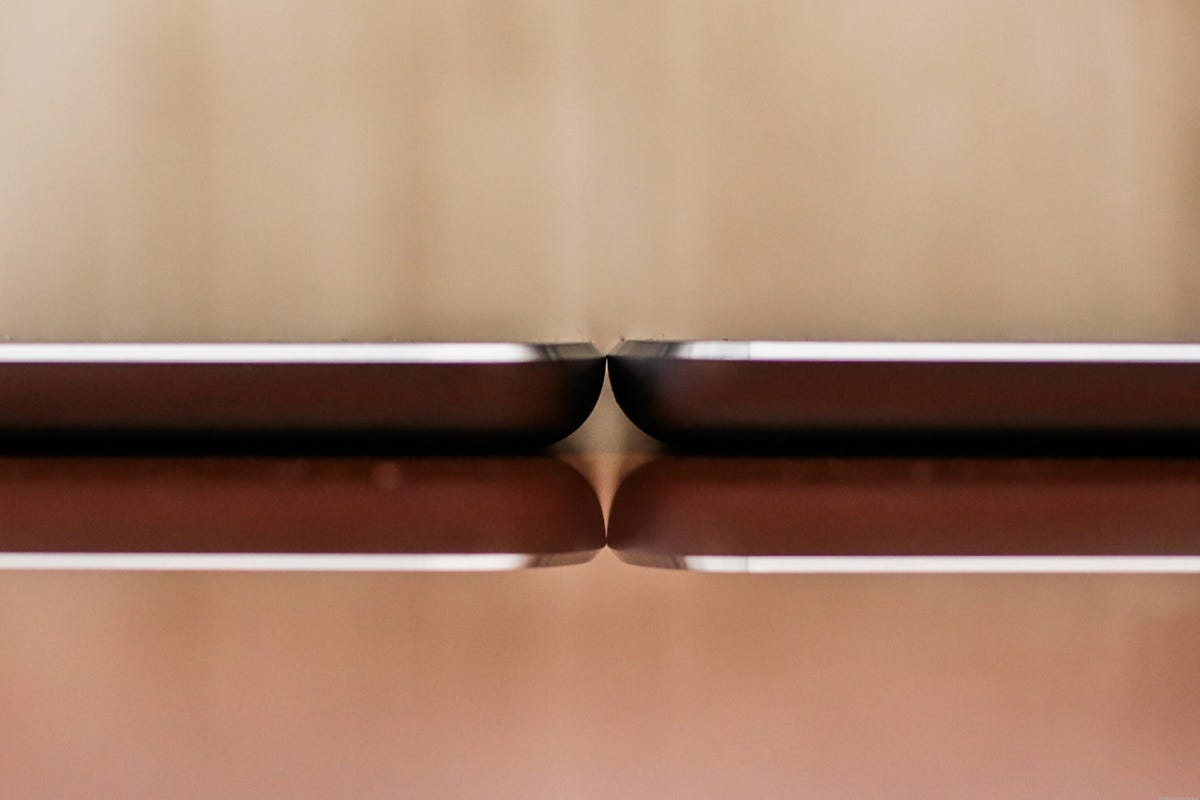

Sarah Tew/CNET
Retina Mini and Air: Two different-sized peas in the same pod
It seems like the iPad Air and iPad Mini with Retina Display have nearly identical specs. Both have A7 processors. Both have the same-resolution Retina Display. Both start with 16GB of storage. Both have 5MP rear cameras and improved front-facing cameras. Both have, according to Apple, up to 10 hours of promised battery life (but we exceeded those promises testing both iPads). Neither has Touch ID. They even have the same colors.
There are some differences: the A7 processor on the iPad Air is a little bit faster than the A7 on the Retina Mini. The display quality on the Air’s a bit better, too.
But essentially, these are the same iPad, in two slightly different sizes: 9.7-inch, and 7.9-inch. Both have 2,048×1,536-pixel resolutions, at 264 versus 326 pixels per inch. For comparison, both top the pixel density of last year’s Mini (163). Can you tell the difference between those pixel densities? My guess is no. It will mean some in-app text is inevitably smaller on the Mini.
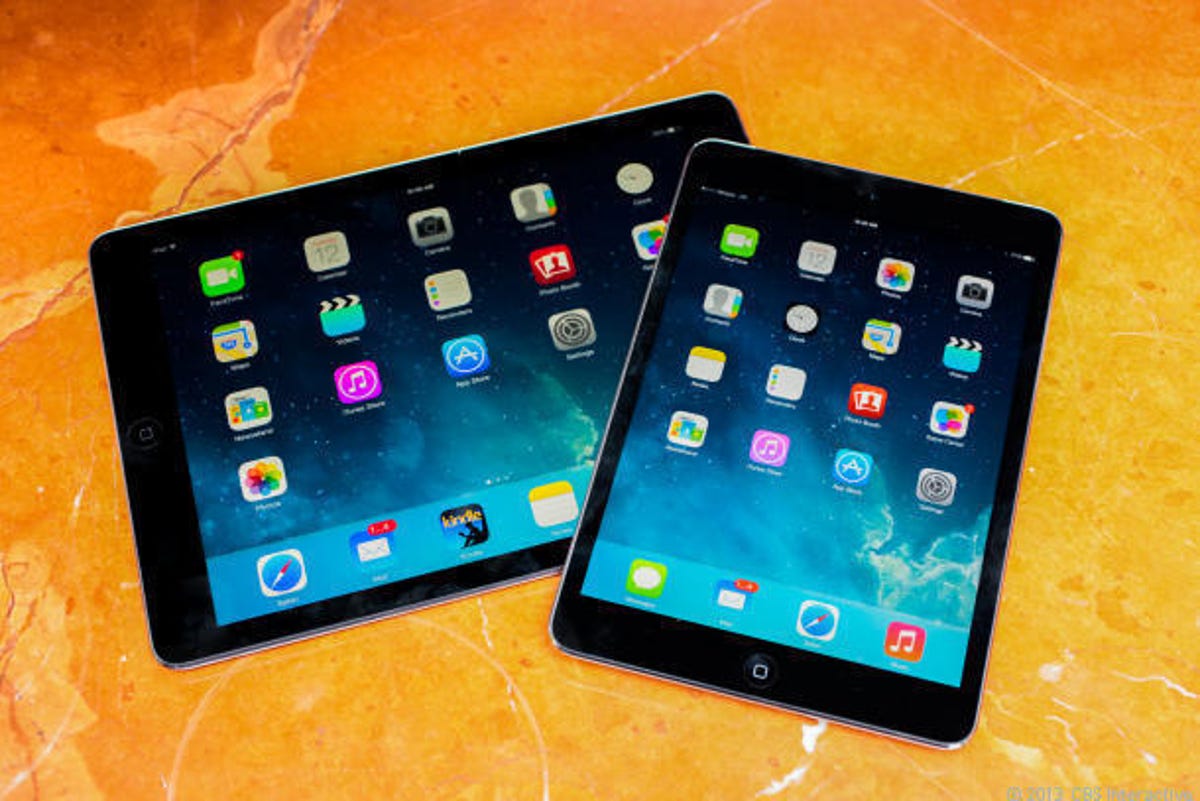

Sarah Tew/CNET
Is there a wrong decision?
Here’s the best news: you can’t really go wrong…unless you get an iPad 2 (just buy a $299 non-Retina iPad Mini, it costs less and has the same performance). They should both be fast, have up-to-date displays, and are closer in size and weight to each other than ever before. So, you save $100 and get a physically smaller screen, or you don’t. If you can’t get a Retina Mini or don’t want to wait, I don’t think you’ll regret getting the iPad Air much. Ask a 13-inch MacBook Air owner how they feel about not owning an 11-inch. It’s a fine difference, and perhaps too fine to obsess over.
These two products are closer than ever: the gap between last year’s 1.4-pound fourth-gen Retina iPad and 0.68-pound non-Retina Mini was immense. This year, there’s barely a gap at all.



